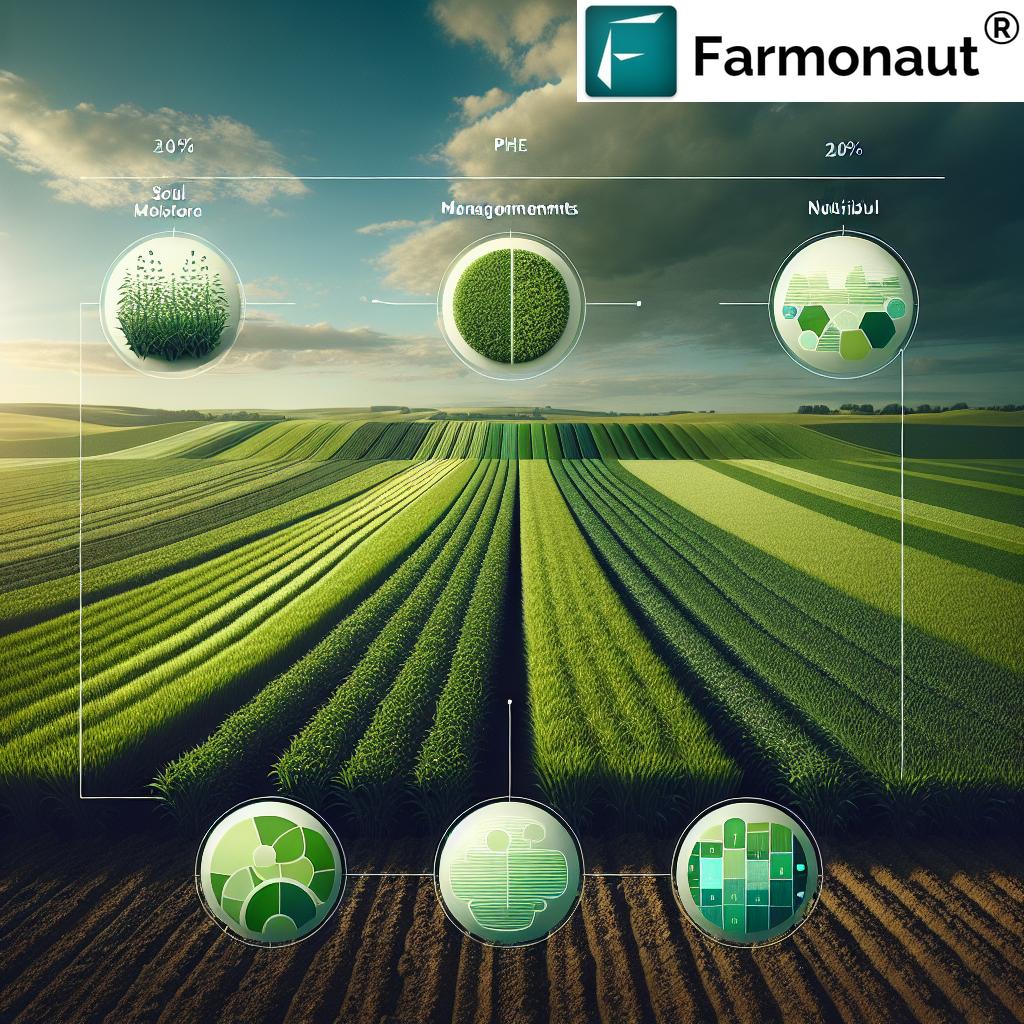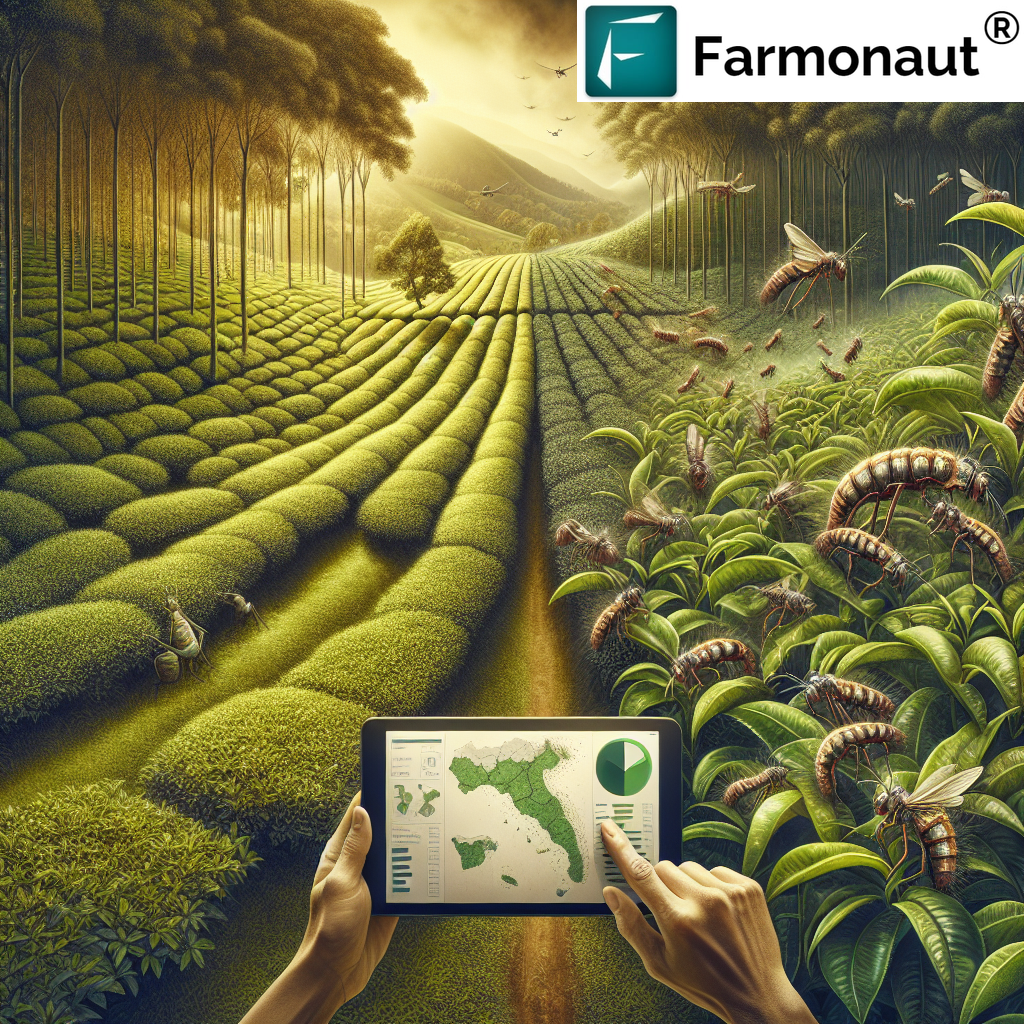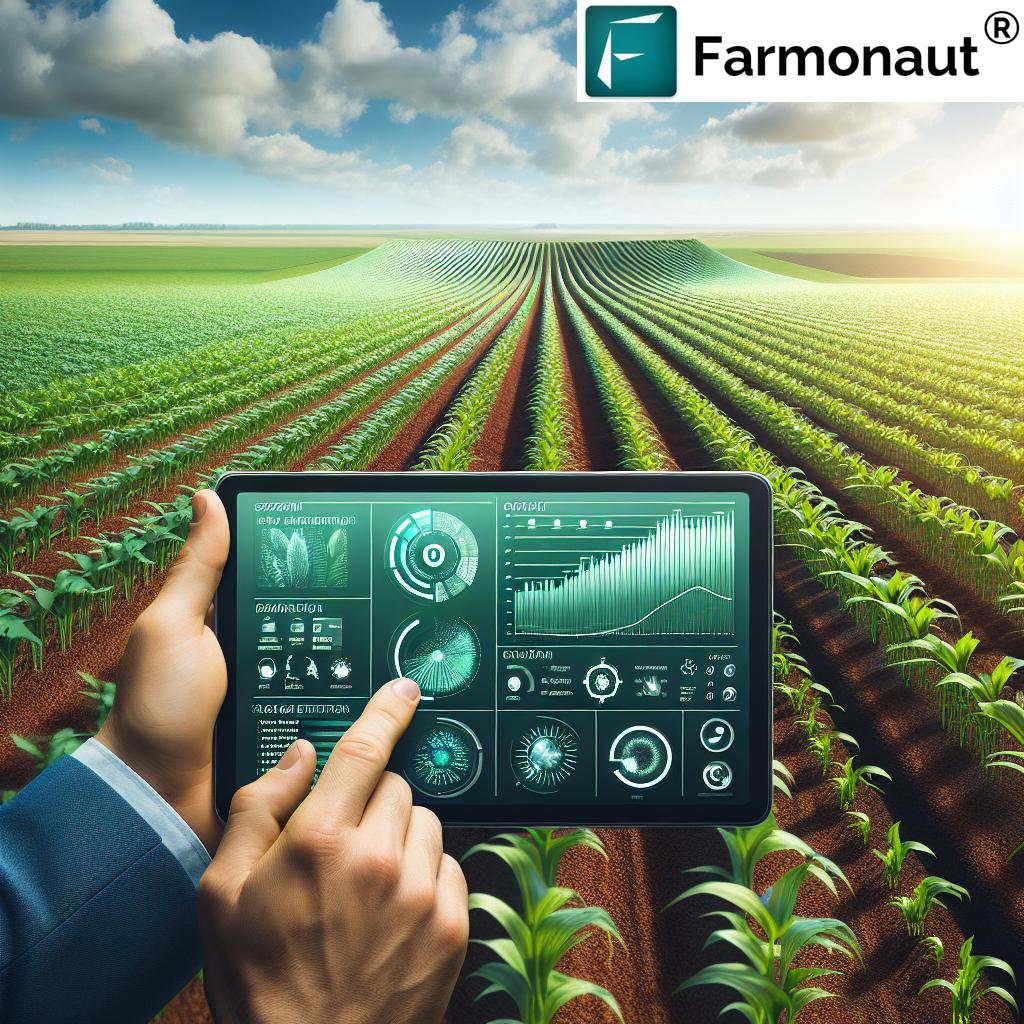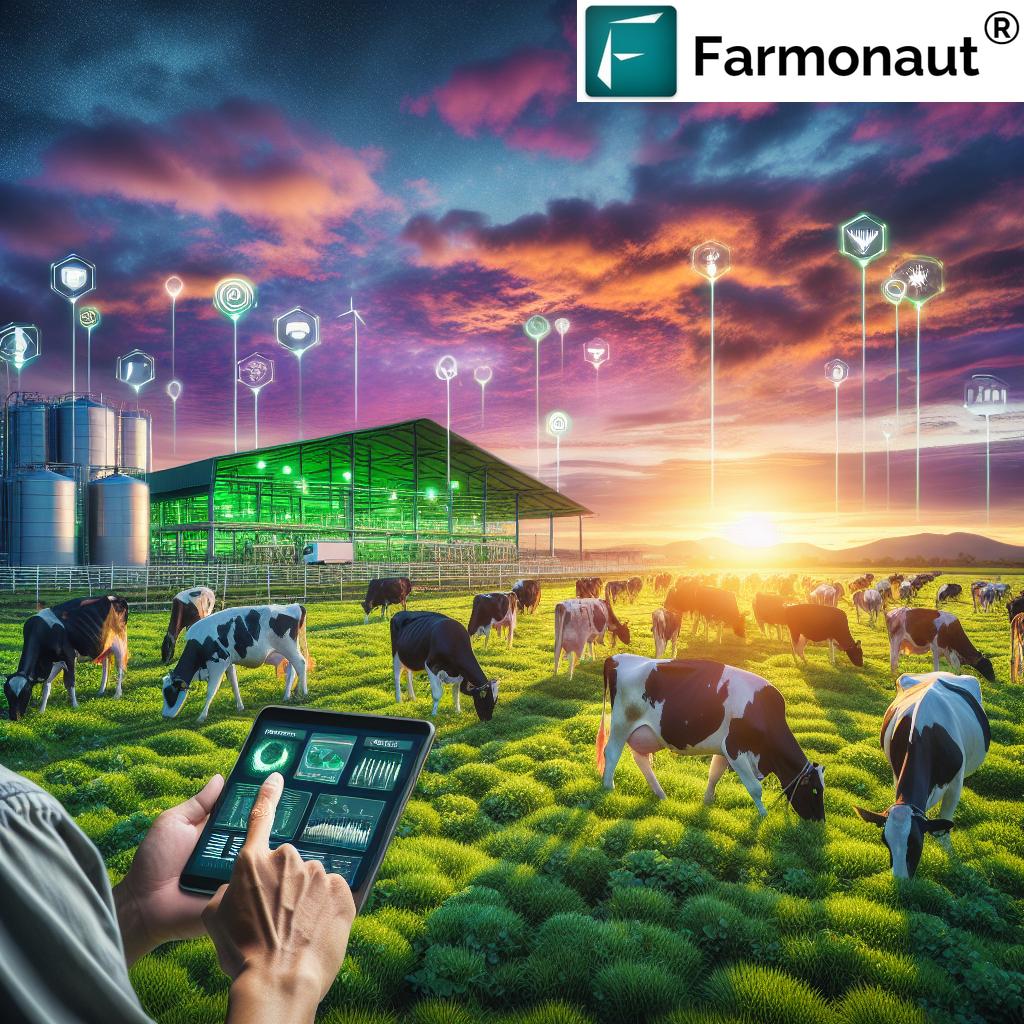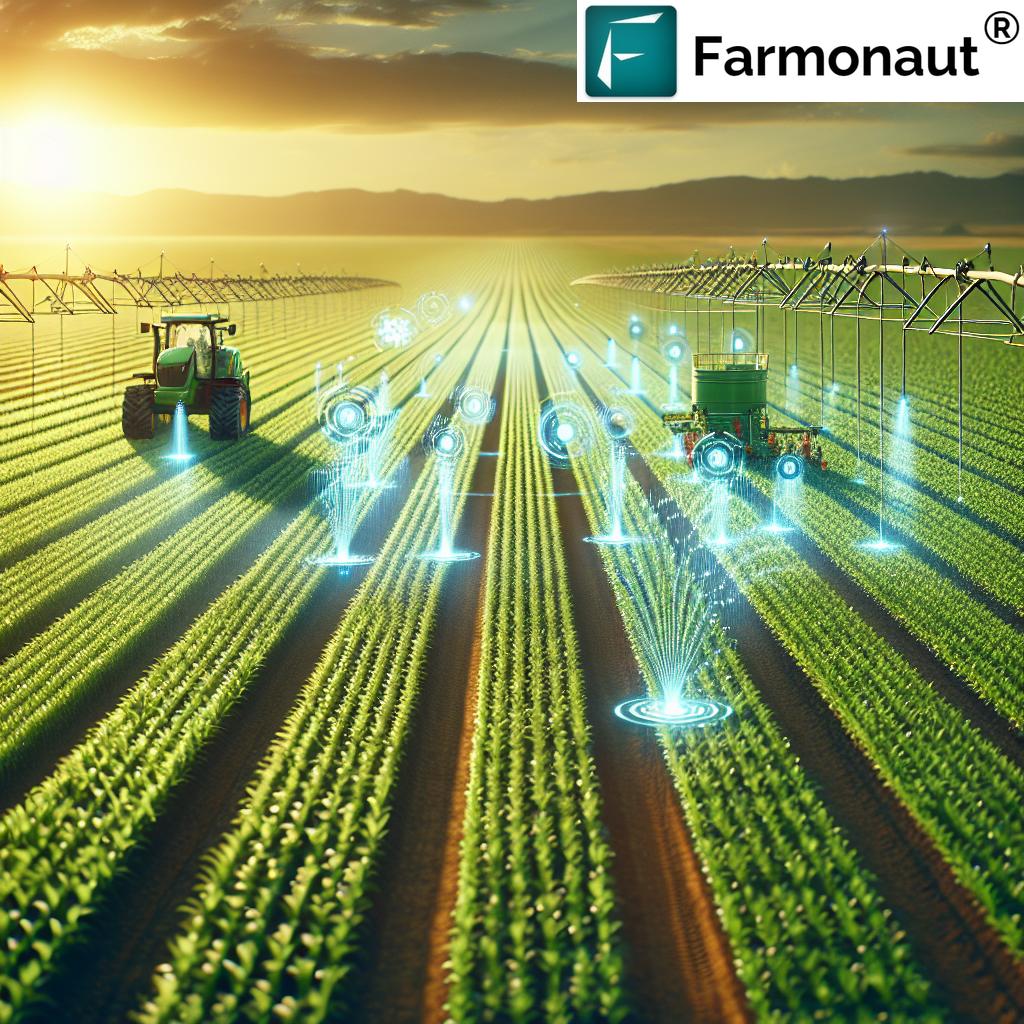Pheromone Traps in Agriculture, Agriculture Maps: Top 2025
Summary: Pheromone Traps and Agricultural Maps: Revolutionizing Pest Management in Modern Farming
“**Over 70% of precision farms in 2025 will use pheromone traps for targeted pest control, boosting crop yields.**”
Table of Contents
- Introduction: Facing 2025’s Agricultural Pest & Mapping Challenges
- Understanding Pheromone Traps in Agriculture
- Evolution of Pest Management: From Chemicals to Pheromone Traps
- Agricultural Maps and Digital Mapping in Modern Farming
- Integration: Pheromone Traps, Agriculture Maps & Precision Farming
- Top Benefits & Applications in 2025
- Farmonaut’s Role in Advanced Agri Mapping & Monitoring
- Comparative Matrix: Pheromone Traps vs Traditional Pest Control
- Deploying Pheromone Traps & Agriculture Maps: Step-by-Step Guide
- Challenges, Solutions & the Future: 2025 and Beyond
- FAQ: Pheromone Traps, Agriculture Maps & Precision Pest Control
- Conclusion
- Get Started with Farmonaut Subscriptions
Introduction: Facing 2025’s Agricultural Pest & Mapping Challenges
The face of global agriculture in 2025 is shaped by an escalating food demand, rapid technological advances, and rising environmental challenges. Farmers worldwide must manage increasingly complex pest populations while pursuing sustainable practices and ensuring resilient crop production. In this evolving landscape, pheromone traps in agriculture, agriculture maps, and integrated digital mapping technologies are revolutionizing pest management, empowering farmers with precision, efficiency, and sustainability.
In this comprehensive guide, we explore:
- How pheromone traps work as a smart, targeted alternative to traditional pesticides
- The transformative power of agricultural maps, GIS, and remote sensing in modern pest management
- The seamless integration of trap data into digital agriculture maps for precision farming
- How solutions like Farmonaut are empowering users with affordable, real-time, and actionable pest and field data
- Actionable strategies and step-by-step deployment for farmers & agronomists in 2025
Understanding Pheromone Traps in Agriculture
At the core of modern pest management in 2025 are pheromone traps—ingenious devices that utilize sex pheromones: chemical signals emitted by insect species to communicate, especially for mating. When deployed in agricultural systems, these traps act as species-specific lures, attracting and trapping male insects with astonishing precision.
- Pheromone traps disrupt breeding cycles, effectively reducing pest populations without affecting beneficial insects, wildlife, or the environment.
- Advancements in synthetic pheromone production have made these devices more affordable, sensitive, and accurate than ever before.
- In 2025, pheromone traps in agriculture, agriculture maps are widely used against codling moths (in apple orchards), bollworms (in cotton), and corn borers (in maize).
The method offers an eco-friendly alternative to broad-spectrum chemical pesticides, shifting pest management toward more sustainable, precise, and data-driven strategies.
Discover how regional agri-innovation in Almería is using pheromone traps and other tools to control crop viruses and pests in 2025.
How Pheromone Traps Work: Science & Mechanism
- Sex pheromones are emitted by female insects to communicate mating readiness.
- Traps are impregnated with synthetic versions of these pheromones.
- Male pests are lured towards the traps, attracted by the chemical signals.
- Upon entering the trap, males are captured—interrupting breeding cycles and managing populations.
By targeting specific species, pheromone traps enable targeted and effective interventions, replacing the “spray and pray” approach of conventional pesticides.
Types of Pheromone Traps in Agriculture
- Sticky Traps: Simple sheets coated with adhesive and baited with pheromones. Used extensively in cotton, maize, orchards, and greenhouses.
- Bucket/Funnel Traps: Capture larger flying pests; the pheromone lure is placed above a collection bucket.
- Delta Traps: Folded cards in a triangular (delta) shape for monitoring moth populations.
- Digital Smart Traps (2025): IoT-enabled, equipped with sensors and cameras to provide real-time pest density data and transmit images to digital agriculture platforms.
Targets & Use Cases: Where Pheromone Traps are Crucial
- Codling Moths — Apple, pear, walnut orchards
- Bollworms — Cotton fields, nightshade crops
- Corn Borers — Maize fields
- Fruit Flies — Stone fruits, citrus, mangoes
- Rice Stem Borers — Paddy fields in Asia and beyond
Farmers can monitor these crucial pests, capture density data, and make informed decisions regarding timing and location of any further interventions.
“**Agricultural maps are projected to reduce pesticide use by 40% in tech-driven farms by 2025.**”
See how AI-powered drones enhance pest mapping, reducing crop damage and saving costs—an essential companion to pheromone-based systems in 2025.
Evolution of Pest Management: From Chemicals to Pheromone Traps & Precision Systems
Historically, chemical pesticides dominated global pest control. This approach, while initially effective, led to numerous challenges:
- Non-target Impacts: Broad-spectrum chemicals harmed beneficial insects and wildlife.
- Chemical Resistance: Overuse led to resistant pest populations.
- Environmental Contamination: Runoff polluted soil and waterways, impacting ecosystems and human health.
- Escalating Costs: Rising pesticide costs squeezed farm profits and sustainability.
The shift toward integrated pest management (IPM) and pheromone traps in agriculture, agriculture maps is reshaping strategies by emphasizing targeted, data-driven methods that reduce reliance on chemicals, lower costs, and enhance crop health.
Why 2025 Prioritizes Precision & Mapping
- Global demand for safe, sustainable food is at an all-time high.
- Climate change is altering pest pressure and distribution, requiring dynamic monitoring.
- Modern farming systems demand cost-effective, environmentally-responsible practices.
- Policy and regulations in 2025 increasingly favor non-chemical interventions and digital traceability.
Explore how modern agriculture in 2025 is transformed by GIS and remote sensing for smarter, sustainable pest control and mapping.
Agricultural Maps and Digital Mapping in Modern Farming
Agricultural maps are digital geospatial representations that combine layers of data about soil health, crop growth stages, weather patterns, and crucially, pest presence—often captured via pheromone traps. In 2025, these maps form the foundation of precision agriculture.
- Geospatial Mapping: Using GIS and satellite imagery (such as offered by Farmonaut), farms visualize precise spatial distributions of pests and crop stress.
- Integration with IoT Devices: Data from digital pheromone traps, soil sensors, and drones is automatically uploaded to farm management platforms.
- Remote Sensing: AI-driven analytics identify hotspots and infestation trends, verifying stress and damage that may require attention.
Farmonaut’s satellite-based platform enables real-time monitoring of crop health, assisting farmers in identifying stress caused by pests and optimizing interventions.
How Agricultural Maps Work: Closing the Feedback Loop
- Digital pheromone traps send capture counts and location data to a central system.
- Agricultural maps update in real time, layering pest pressure, crop condition, and weather outlooks.
- Farmers and advisors visualize hotspots and make decisions—when and where to act. This greatly reduces unnecessary pesticide use and targets interventions effectively.
Advanced mapping tools, such as those provided by Farmonaut, empower users with satellite imagery, AI analytics, and blockchain-based traceability for enhanced decision-making in pest and crop management.
Learn how to get started with large-scale digital field mapping and crop monitoring with the Farmonaut platform for 2025.
Integration: Pheromone Traps, Agriculture Maps & Precision Farming
The integration of pheromone traps in agriculture, agriculture maps, and real-time digital monitoring represents a leap forward for precision farming in 2025. This combined use enables:
- Site-Specific Interventions: Pesticides or biological controls are applied only where needed—thus reducing chemical inputs, costs, and environmental impact.
- Early Warning Systems: Continuous trap monitoring produces alerts if pest populations spike beyond thresholds, enabling proactive responses.
- Enhanced Data Analysis: Integration of capture data with historical trends improves pest risk modeling and long-term planning.
- Efficient Resource Use: Input application, irrigation, and even harvest decisions are optimized based on up-to-date crop health and pest hotspot maps.
See how AI-powered scouting integrates field, pest, and crop data for smarter, sustainable agriculture in 2025.
Example: Integrated Pest Hotspot Mapping
- Scenario: In a maize field in 2025, pheromone traps flag a spike in corn borer males in a 5-hectare region.
- Agricultural map overlays real-time data, visualizing this as a red “hotspot”.
- Intervention is localized—only affected blocks are treated, reducing pesticide costs and environmental harm.
This targeted approach, leveraging precision digital mapping, is vastly more efficient than blanket pesticide spraying.
Top Benefits & Applications of Pheromone Traps and Agriculture Maps in 2025
Combining pheromone traps in agriculture, agriculture maps and mapping technologies enables profound advantages for farmers, agronomists, and food systems alike.
1. Targeted Pest Control and Reduction in Pesticide Use
- Agriculture maps highlight exactly where pest pressure is highest.
- Pesticides or biological agents are applied only where needed—not across the entire field.
- Studies indicate up to 40% reduction in pesticide use on tech-driven farms by 2025.
2. Early Detection & Proactive Management
- Continuous trap monitoring provides early warnings before economic damage.
- Farmers can prevent severe outbreaks, improving yields and sustainability.
3. Reduced Chemical Resistance
- Data-driven rotation/mixing of control strategies delays development of resistance.
- Less frequent application means less evolutionary pressure on pest populations.
4. Regulatory Compliance & Market Access
- Many countries in 2025 require proof of sustainable, integrated pest management before market entry.
- Pheromone-based approaches and digital agriculture maps support compliance, digital traceability, and consumer confidence.
Learn how Farmonaut traceability solutions create secure, blockchain-based supply chain records for agricultural products.
5. Lower Costs & Improved Profitability
- Mapping-based targeting minimizes wasted inputs, saving money on chemicals, labor, and fuel.
- Optimized interventions lead to healthier crops, higher yields, and better profitability.
6. Environmental Protection and Sustainability
- Reduced chemical leakage protects water, soil, and non-target species.
- By tracking carbon footprinting through advanced tools, we advance global sustainability goals.
Explore Farmonaut’s Carbon Footprinting platform to measure and mitigate emissions in agriculture.
Access Farmonaut via Web App, Android and iOS for instant satellite-driven agricultural insights.
7. Unlocking Scalability: From Small Plots to Large Farms
Through affordable digital monitoring and large scale farm management, these tools are now accessible to not just big enterprises but also smallholders and cooperatives.
Farmonaut’s Large Scale Farm Management App helps manage extensive fields and even forest plantations using real-time mapping and advisory tools.
Farmonaut’s Role in Advanced Agri Mapping & Monitoring
As a leading satellite technology company, Farmonaut offers a comprehensive suite of tools that empower precision farming for 2025 and beyond. Here’s how we integrate pheromone trap data into powerful, actionable agricultural maps:
- Satellite-Based Monitoring: We provide datasets on vegetation health, soil conditions, and crop stress, supporting early identification of pest or disease outbreaks.
- AI and Machine Learning: Our platforms, including Jeevn AI Advisory, analyze trap counts and remote sensing metrics, offering tailored advisory strategies for pest management and resource optimization.
- Blockchain-Powered Traceability: Guarantees the authenticity and transparency of farm products, compliant with 2025’s strict regulatory environment.
(See how Farmonaut’s blockchain traceability enhances supply chain transparency.) - APIs and App Accessibility: We offer easy-to-integrate APIs and
developer documentation so any agri-technology system can leverage real-time mapping and monitoring.
Watch how satellite and AI-powered mapping are revolutionizing farm management, tree counting, and boosting accountability in 2025 agriculture.
Comparative Matrix: Pheromone Traps vs Traditional Pest Control (with 2025 Agriculture Maps Integration)
| Pest Control Method | Estimated Effectiveness (%) | Environmental Impact (Scale 1-5) | Cost Estimate (USD/hectare) | Integration with Agriculture Maps | Adoption Rate in 2025 (%) |
|---|---|---|---|---|---|
| Chemical Pesticides | 70–85% | 4–5 (High) | 40–120 | No | 35% |
| Biological Controls (Predators/Biocontrol Agents) | 50–75% | 2–3 (Medium) | 25–100 | Partial | 20% |
| Pheromone Traps (Standalone) | 60–80% | 1–2 (Low) | 20–60 | Yes | 40% |
| Pheromone Traps + Digital Agriculture Maps | 80–95% | 1 (Lowest) | 20–70 | Yes (Full) | 70% (projected) |
Deploying Pheromone Traps & Agriculture Maps: Step-by-Step Guide for 2025
- Step 1: Identify target pest species and verify suitable pheromone lures for your crops (e.g., codling moth, bollworm, corn borer).
- Step 2: Place traps uniformly across the fields, focusing on high-risk zones determined by previous seasons’ agricultural maps.
- Step 3: Monitor capture counts at regular intervals—digital smart traps can automate this process and upload data in real time.
- Step 4: Use a digital agriculture mapping platform (like Farmonaut) to overlay pest data, crop health, and weather patterns.
- Step 5: Make data-driven decisions regarding targeted interventions, choosing the most sustainable and cost-effective approach (biocontrol, localized pesticide, etc).
- Step 6: Regularly assess outcomes, updating trap placement and mapping strategies to adapt to evolving challenges and seasonal pest shifts.
For best-in-class digital mapping, real-time monitoring, and in-depth advisory, choose innovative solutions like
Farmonaut.
Challenges, Solutions, and the Future: 2025 and Beyond
While the combined use of pheromone traps in agriculture, agriculture maps is undeniably beneficial, some challenges must be addressed for universal adoption:
- Initial Investment: Setting up digital mapping and trap systems carries upfront costs. However, lower recurring expenses and government incentives in 2025 are making adoption easier.
- Farmer Training: New systems require technical skills. User-friendly apps and AI advisory platforms (like Jeevn AI by Farmonaut) are closing the skills gap.
- Data Management: High data volumes need processing. API integrations, smart alerts, and tailored dashboards simplify decision-making.
(Farmonaut fleet management also optimizes farm logistics for cost-efficient input delivery). - Connectivity: In remote areas, smart traps might face connectivity issues; mesh networks and offline caching are evolving rapidly.
The Future: What’s Next for Precision Pest Management?
- IoT Smart Traps: Next-gen traps will auto-detect pest entry, count individuals, and send geo-tagged updates via 5G/LTE/LoRaWAN.
- AI-Powered Predictive Models: Pest behavior will be forecasted using machine learning algorithms, integrating climate projections and genomic pest data.
- Blockchain Traceability: From trap-to-fork, every step in the crop supply chain will be securely logged and validated.
Farmonaut Product Traceability is already leading this transition in 2025. - Global Data-Sharing Platforms: Open-source, anonymized pest pressure maps will underpin global food security, disease prevention, and rapid response.
In summary, pheromone traps and agriculture maps are not just temporary solutions—they’re the backbone of a sustainable, food-secure future.
FAQ: Pheromone Traps, Agriculture Maps & Precision Pest Control
What are pheromone traps, and how do they help manage pests?
Pheromone traps in agriculture use synthetic sex pheromones to attract and capture specific pests, primarily disrupting mating cycles and reducing populations without harming beneficial insects. They enable targeted, data-driven interventions.
How do agriculture maps improve pest management in 2025?
Agriculture maps provide geospatial data on pest hotspots, crop health, and environmental factors. By integrating pheromone trap data, these maps help farmers make site-specific, timely, and effective pest-control decisions.
What are the main benefits of combining pheromone traps with mapping technologies?
- Significantly reduces pesticide use and costs
- Enables precise interventions (fewer chemicals, higher efficacy)
- Better regulatory compliance and improved market access
- Enhanced environmental sustainability
Is it expensive to switch from chemical pesticides to pheromone traps and digital mapping?
Initial investment may be higher, but operational costs are lower over time due to reduced input use and improved efficiency. With more government incentives and affordable platforms (like Farmonaut), adoption is accelerating in 2025.
How can I access advanced mapping for pest management?
Platforms like Farmonaut offer affordable subscriptions, mobile/web apps, and API integrations for individual farmers, businesses, and governments worldwide.
Conclusion
In 2025, pheromone traps in agriculture, agriculture maps, and smart pest management systems are at the cutting edge of modern farming. Advanced mapping tools, real-time monitoring, and actionable data are enabling precision agriculture—helping us all grow more food, reduce pesticide reliance, and protect our planet. As we face evolving challenges in global food demand and climate change, these innovative tools will remain paramount in building resilient, sustainable, and profitable farming systems worldwide.
To experience the next generation of pest & resource management—from blockchain traceability and AI-driven advisory to environmental monitoring and field-level mapping—explore Farmonaut’s digital solutions today.
Get Started with Farmonaut Subscriptions
Ready to revolutionize your pest management and digital agriculture mapping in 2025? Learn more about our affordable satellite-driven monitoring, AI-powered advisory, and blockchain traceability solutions below.
Stay connected with the future of agriculture—where pheromone traps, agriculture maps, and advanced digital tools are empowering every farmer on the planet.




